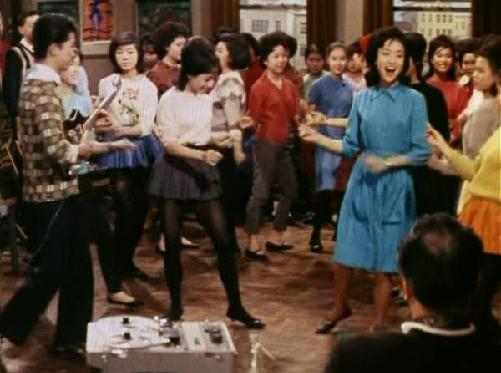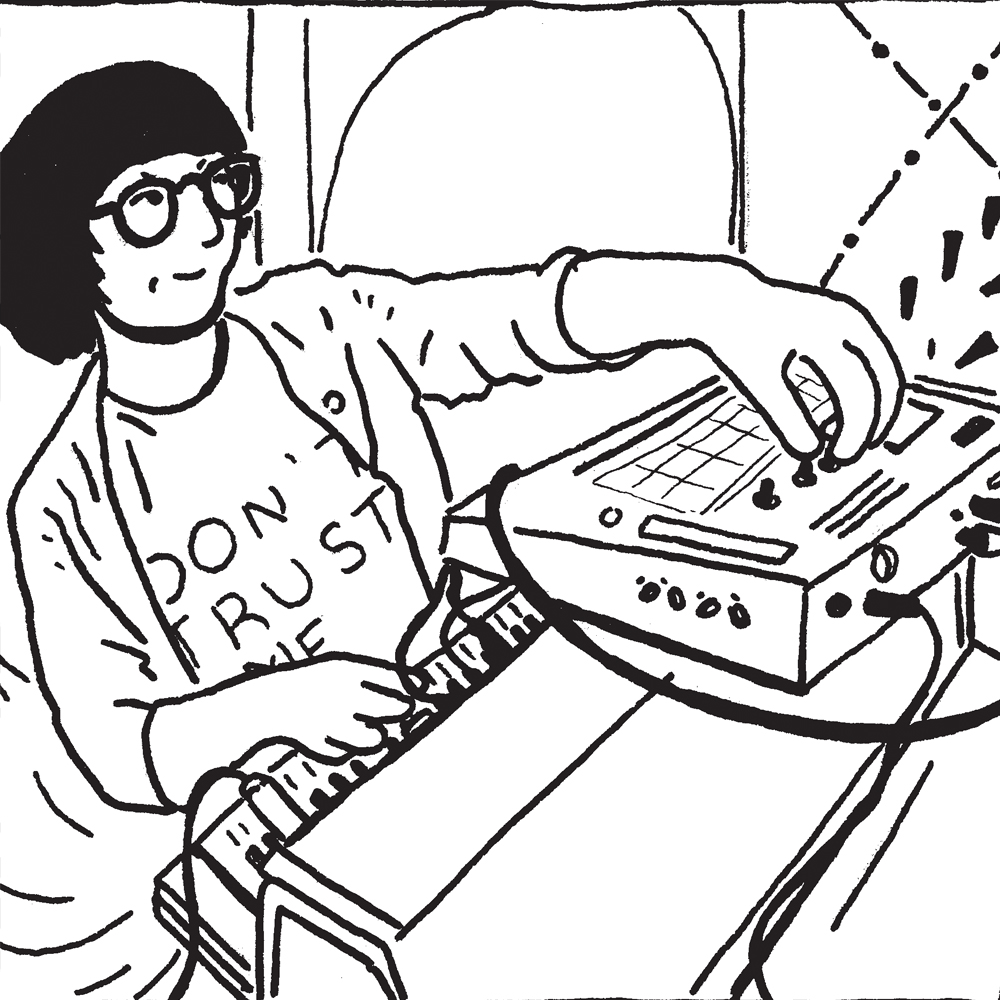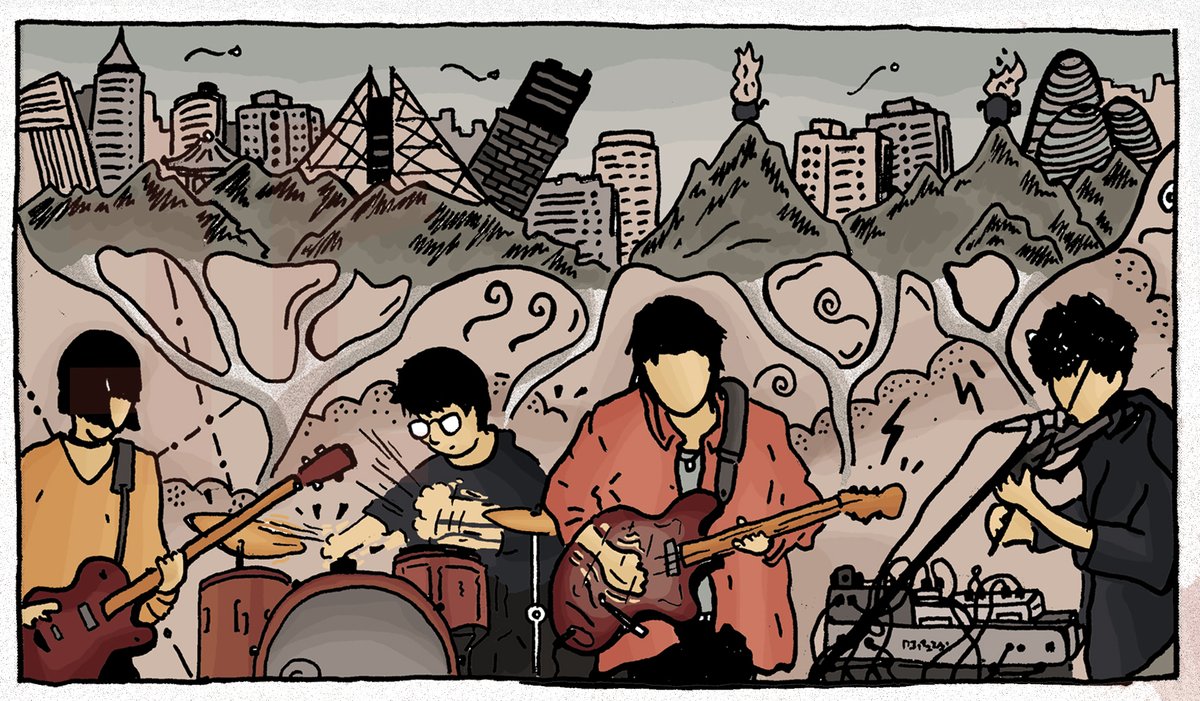I& #39;ve been reading two books that have completely rewired the way I think about modern music, and the history of contemporary music in China. They& #39;ve also produced a huge breakthrough in the comicbook that @joshfeola and I are working on!
I wrote some excited thoughts about it all on our newsletter here below. But a quick summary below this if you& #39;re into THREADS
http://tinyletter.com/buddhaboxes/letters/episode-13-prophets-of-noisy-heavens-and-a-syncopated-earth">https://tinyletter.com/buddhabox...
http://tinyletter.com/buddhaboxes/letters/episode-13-prophets-of-noisy-heavens-and-a-syncopated-earth">https://tinyletter.com/buddhabox...
Noise Uprising argues that the origins of & #39;modern music& #39; lie in a network of colonial ports and the sounds they produced in the 20s/30s, driven by 78 RPM shellac records. Sounds like tarab/kroncong/raï decolonized our ear, and created the polyphonic mixing of sounds we know today
In other words, places like Jakarta, Algiers, Havana were the primordial soup for all 20th century music. It appeared on the edges and borders of global capitalism rather than the center. It& #39;s what made recorded music such an integral part of our everyday life.
One of the nodes of this global archipelago was, of course, Shanghai. & #39;Circuit Listening& #39; starts there, and argues that this network of colonial ports was merely the first of a few global & #39;circuits& #39; that seeded musical ideas and forms, usually on the back of a new technology.
The long 60s produced a second circuit—a global, amplified rock& #39;n& #39;roll and campus folk movement driven by transistor tech and vinyl records—and they took over the Chinese-language world.
The first & #39;circuit& #39; from Noise Uprising was interrupted in China by the onset of CCP rule. Successors to the 30s Shanghai scene relocated to Hong Kong, from where a new gen. of singers like Teresa Teng would "reintroduce" these interrupted circuits back to China in the 70s.
The book opens with this incredible 1962 song from a Hong Kong film, where you can SEE the transition of the old musical world into the new. Tradition shattering into polyphonic modernity. If you take one thing away from this thread, let it be this video: https://www.youtube.com/watch?v=Dpbl2Z1jD2E">https://www.youtube.com/watch...
Jones explains why the image of a & #39;circuit& #39;, which can light up simultaneously at different points, is key to parsing 20th century musical history. This is also the core guiding principle of @joshfeola and my comic book:
Quick pause while my mind is blown.  https://abs.twimg.com/emoji/v2/... draggable="false" alt="🤯" title="Exploding head" aria-label="Emoji: Exploding head">
https://abs.twimg.com/emoji/v2/... draggable="false" alt="🤯" title="Exploding head" aria-label="Emoji: Exploding head"> https://abs.twimg.com/emoji/v2/... draggable="false" alt="🤯" title="Exploding head" aria-label="Emoji: Exploding head">
https://abs.twimg.com/emoji/v2/... draggable="false" alt="🤯" title="Exploding head" aria-label="Emoji: Exploding head"> https://abs.twimg.com/emoji/v2/... draggable="false" alt="🤯" title="Exploding head" aria-label="Emoji: Exploding head">
https://abs.twimg.com/emoji/v2/... draggable="false" alt="🤯" title="Exploding head" aria-label="Emoji: Exploding head">
I cannot tell you how mind-expanding reading this was. If there& #39;s a through line to everything that @joshfeola and I have written for the last 10+ years, it is that contemporary music from across Asia is NOT "partial, belated or emerging."
The music we love exists on a global continuum, a circuit that lit up simultaneously across the Asian continent, powered by an impossible tangle of wires like the ones that hang above Tokyo or Yangon streets.
Indonesian shoegaze is not a cheap copy of My Bloody Valentine. Korean synth pop is not & #39;imitating& #39; a western genre. These sounds are at the center of a genre& #39;s history, not its margins.
In a sense, our forthcoming comic book & #39;Open All the Buddha Boxes& #39; is about a THIRD circuit—the introduction of the Internet in the 90s lighting up a global neon afterglow of experimental and electronic music in China alongside the rest of the world.
A generation discovered a century of music in a decade, and reinvented it for themselves. How Beijing changed these young musicians, and how they changed Beijing, is the bulk of our comic.
This is SO exciting. COVID-19 produced an unexpected, depressing end to the timeline of our book. A closing off of possibilities, a tense void. But thanks to the books and the bands we& #39;ve been researching, we now have a BEGINNING—one that crackles and sparks with open potential.
Anyways, sorry about the long thread and sign up for updates here! http://book.joshfeola.com"> http://book.joshfeola.com

 Read on Twitter
Read on Twitter






